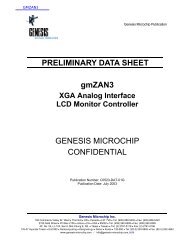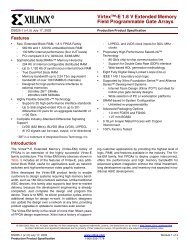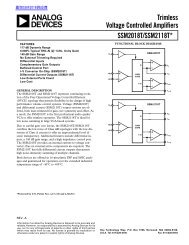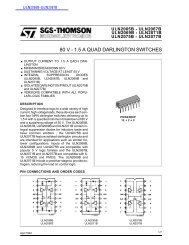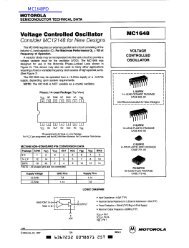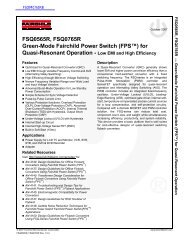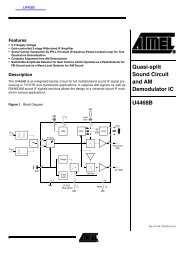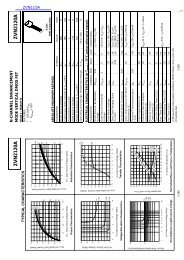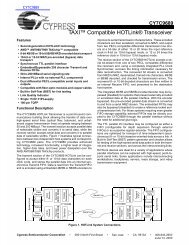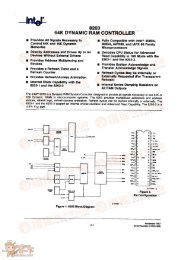Create successful ePaper yourself
Turn your PDF publications into a flip-book with our unique Google optimized e-Paper software.
11.3.2 Setup<br />
Numonyx <strong>Wireless</strong> <strong>Flash</strong> <strong>Memory</strong> (<strong>W30</strong>) (<strong>W30</strong>)<br />
After receiving the EFP Setup (30h) and EFP Confirm (D0h) command sequence, SR[7]<br />
transitions from a 1 to a 0, indicating that the WSM is busy with EFP algorithm startup.<br />
A delay before checking SR[7] is required to allow the WSM time to perform all of its<br />
setups and checks (V PP level and block lock status). If an error is detected, status<br />
register bits SR[4], SR[3], and/or SR[1] are set, and the EFP operation terminates.<br />
Note: After the EFP Setup and Confirm command sequence, reads from the flash device<br />
automatically output status register data. Do not issue the Read Status Register<br />
command, because this command is interpreted as data to program at WA 0 .<br />
11.3.3 Program<br />
11.3.4 Verify<br />
After setup completion, the host programming system must check SR[0] to determine<br />
the data-stream ready status (SR[0]=0). Each subsequent write after this check is a<br />
program-data write to the flash memory array. Each cell within the memory word to be<br />
programmed to 0 receives one WSM pulse; additional pulses, if required, occur in the<br />
verify phase.<br />
SR[0]=1 indicates that the WSM is busy applying the program pulse.<br />
The host programmer must poll the flash device status register for the program done<br />
state after each data-stream write.<br />
SR[0]=0 indicates that the appropriate cell(s) within the accessed memory location<br />
have received their single WSM program pulse, and that the flash device is ready<br />
for the next word.<br />
Although the host can check full status for errors at any time, this check is necessary<br />
only on a block basis, after EFP exit.<br />
Addresses must remain within the target block. Supplying an address outside of the<br />
target block immediately terminates the program phase; the WSM then enters the EFP<br />
verify phase.<br />
The address can either remain constant or increment. The flash device compares the<br />
incoming address to the address stored from the setup phase (WA0 ).<br />
• If the addresses match, the WSM programs the new data word at the next<br />
sequential memory location.<br />
• If the addresses differ, the WSM jumps to the new address location.<br />
The program phase concludes when the host programming system writes to a different<br />
block address. The data supplied must be FFFFh. Upon program phase completion, the<br />
flash device enters the EFP verify phase.<br />
A high percentage of the flash memory bits program on the first WSM pulse. However,<br />
EFP internal verification identifies cells that do not completely program on their first<br />
attempt, and applies additional pulses as required.<br />
The verify phase is identical in flow to the program phase, except that instead of<br />
programming incoming data, the WSM compares the verify-stream data to the data<br />
that was previously programmed into the block.<br />
• If the data compares correctly, the host programmer proceeds to the next word.<br />
• If the data does not match, the host waits while the WSM applies one or more<br />
additional pulses.<br />
Datasheet November 2007<br />
62 Order Number: 290702-13



